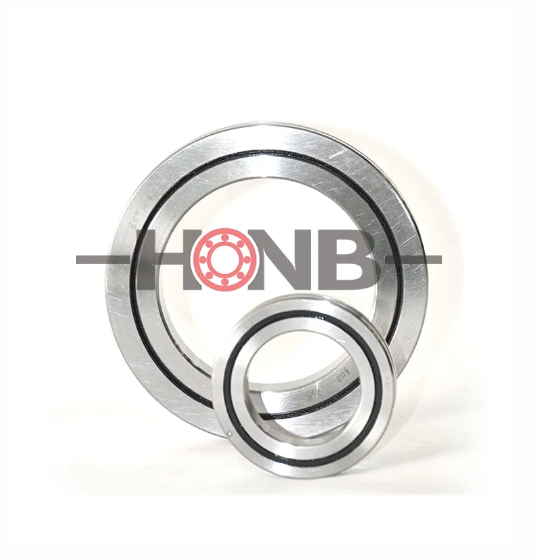Cylindrical roller bearings are generally only used to bear radial load, only when the inner and outer rings of the single row bearings with fenders can bear smaller directional axial load or larger clearance axial load.
Relationship between bearing fit and load type
1) Fixed load
The synthetic radial load acting on the ring, which is carried by a local area of the raceway of the ring and transmitted to the opposite area of the shaft or bearing seat, is called fixed load. The characteristic of fixed load is that the resultant radial load vector is stationary relative to the ring. Neither the ring nor the synthetic radial load rotates or rotates at the same speed as the fixed load. Loose fitting can be used for the ferrule bearing fixed load.
2) Rotating load
The synthetic radial load acting on the ring rotates along the circumference of the raceway and is borne by each part in sequence, which is called the rotating load.
The rotational load is characterized by the resultant radial load vector rotating with respect to the ring. There are three cases of rotary load:
A. The load direction is fixed and the ring rotates;
B. The load vector rotates and the ring stands still;
C. The load vector rotates at different speeds with the ring.
3) Swing load and variable load
Sometimes the direction and size of the load can not be accurately determined, such as in high-speed rotating machinery, in addition to the weight of the rotor under the direction of the fixed load, and the rotating load caused by the unbalanced mass, if the rotating load is much larger than the fixed load, the synthetic load is still rotating load; If the rotational load is much smaller than the fixed load, the resultant load is the swing load. The magnitude and direction of both rotary and swing loads are constantly changing. In the variable working state, the load of some rings may be rotating load, fixed load, and swing load. This load is called indefinite load.
Swing load and variable load should be treated as the same as rotating load in the fit, too loose fit will lead to the damage of the match surface.
Transition fit or interference fit should be selected for the ring and shaft or seat hole rotating relative to the direction of load. The interference size is based on the principle that when the bearing works under load, its ring does not produce “creep” phenomenon on the mating surface of the shaft or the seat hole. When the load is very light, or the ring occasionally rotates at low speed under the action of heavy load, the transition fit can be selected. At this time, the shaft surface should have higher hardness and smaller surface roughness.
For heavy loads, the fit should usually be tighter than for light loads and normal loads. The heavier the load, the larger the fit interference should be.

If you have any questions,pls feel free to contact us.
e-mail:bearing6@hyzcgroup.com
- YRT rotary table bearing
- YRTS rotary table bearing (high speed series)
- YRTM with integral angular measuring system series
- ZKLDF axial angular contact ball bearing series
- RA series crossed roller bearing
- SX series crossed roller bearing
- CRBH series crossed roller bearing
- RE series crossed roller bearing
- RU series crossed roller bearing
- RB series crossed roller bearing
- XR/JXR series crossed taper roller bearing
- Crossed roller bearing

✉️ bearing20@hyzcgroup.com
📞 +86 15236685001





